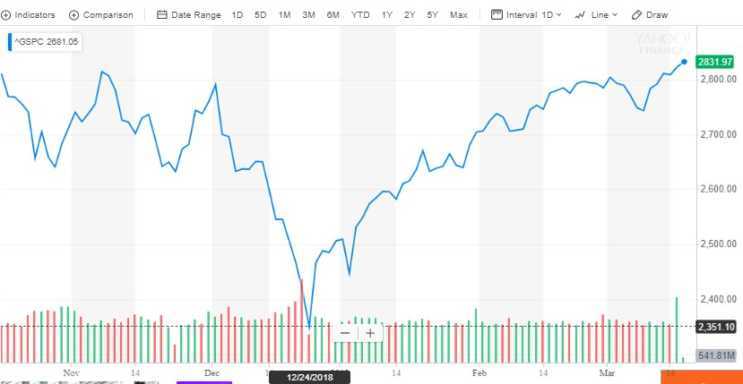The U.S Dollar (USD) has fallen against all the major currencies apart from the Japanese Yen after poor jobs growth from the month of February. Its been widely documented that Trumps administration has been in turmoil for the past 2 years and now with a continuing trade war with China, the pressure is being felt in the country’s currency. As it’s the world’s largest economy and what many emerging markets peg their currency against, the weakness is not to be ignored.

It doesn’t take a genius to predict the US economy has cooled dramatically because of the government shutdown. The political chaos and stubbornness over a campaign pledge with the funding of the proposed Mexican wall paired with the tightening of financial conditions at the end of 2018 all have had a compounding effect.
A combination of weakness in February’s US manufacturing output that came out last week wasn’t predicted. Economists and commentators, expect the Federal Reserve implement a rate increase this year, likely Q3.

U.S. Rates and Index
This will be linked to the above but disappointing industrial/manufacturing output data weighed on the U.S. 10 year and for only the second time this year closed 2.60% lower.
The Dollar Index feel lower for the fifth time in six sessions and seems to be on a technical downtrend compounding further pressure on the US dollar and highlighting more problems with the US economy.
Euro
The Euro fell its lowest level since the middle of 2017 near $1.1175 in early March. Attributed to the ECB and disappointing U.S. data and a greater risk appetite encouraged by Chinese stimulus measures helped lift the euro in four of last week’s five sessions. Technically, it should pull back to the $1.13-$1.15 trading range. Europe as a macroblock is cooling economically with both Germany and France touching on technical recessions but it hasn’t been viewed as the same economic problems as the USA.
Sterling
British Parliament was a circus last week as politicians rejected “no deal” and the Prime minister’s proposed deal. The rejection of the various deals on offer was welcomed by the markets and strengthened the pounds to $1.3380, its best level since June 2018. It spent the last two sessions consolidating and pulling back no lower than $1.3200. It closed firmly ahead of the weekend. Next week is crucial as another EU summit focusing on Brexit will take the attention over the Bank of England (BoE) meeting and employment, earning and retail data. If the pound breaks out and supported by good data it could touch $1.36.
Canadian Dollar
The Canadian dollar has been bipolar of late. In December, along with financial markets showed a contraction in the economy, a trade deficit nearly double to what analysts expected, and a February decline in existing home sales of -9.1%. The Bank of Canada has sat on the proverbial fence and there seem to be stark similarities between the two neighbours economically speaking. The oil is now relatively stable between $55 and $65 a barrel however
Australian Dollar
As we mentioned, the Australian economy has cooled significantly over a series of various global macro and domestic factors, the Aussie Dollar held support and $0.7000 and traded higher last week to reach almost $0.7100. Poor U.S jobs report because of the government shutdown helped against the USD.
Mexican Peso
It’s never a good sign when the strongest economy in the world falls against its poorer, local neighbour but it did. The dollar fell 1.5% against the Mexican Peso last week as it did other emerging market currencies. The charts and technical indicators warn of the risk of additional dollar losses in the coming days with support is seen around MXN19.12 and then at MXN19.00.
Oil
Delivery jumped 4.5% last week on a larger than expected drawdown of U.S. inventories, more and continued disruption in Venezuela and rumour of extension in OPEC cuts. Oil traded above $59 ahead of the weekend for the first time since mid-November. If the technical indicators are to be followed the price could break out to reach $67.
S&P 500
Financial markets (excluding currency) have had a strong 3 months after the flash bear market. It’s at a new four-month high to be precise and up 12.6% year-to-date. Low-interest rates and projections of nearly $1 trillion of share buybacks this year leave traders “going long” with the momentum of bullish sentiment. The record high from last September near 2940 is the real draw. It seems the bull run of 10 years+ is still on the cards.